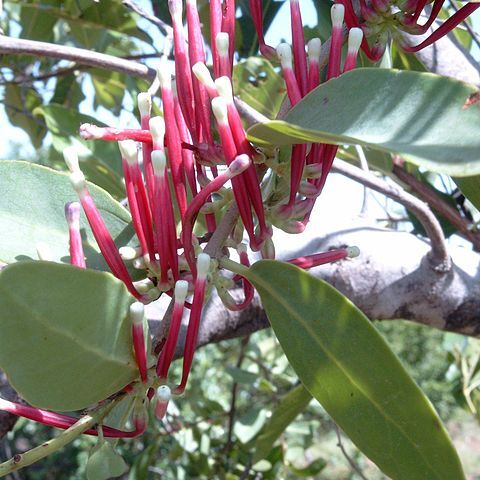Corolla tube much longer than lobes, opening with a V-split, usually pink to purplish; bud head greenish to white, darkening at maturity, commonly angled, ribbed, winged or appendaged; basal swelling well formed; lobes attenuate to spathulate, erect or generally reflexed.
Stamen filaments inserted near top of corolla tube, short, linear, inflexed to inrolled; tooth distinct, 0.5–1 mm long; anthers 4-thecous, short, (1.2)2–3.5 mm long, with a broad connective slightly produced at the apex.
Shrubs, mostly extending 0.5–2 m from a single haustorial connection; twigs slightly compressed at first, soon terete, glabrous to puberulous or velvety with small simple hairs.
Flowers 2–16 in umbels, 5-merous; umbels in axils or clustered at older nodes, shortly pedunculate, perulate; bracts saucer-shaped to cupular with a small triangular limb.
Berry usually ripening red, oblong-ellipsoid to globose, often somewhat urceolate to protraction just below persistent calyx, smooth to papillose.
Leaves mostly opposite, sessile to petiolate; lateral nerves spreading, usually some of the lower ones more strongly ascending.
Calyx saucer-shaped to cupular or occasionally shortly tubular, almost entire, sometimes split by expanding corolla.
Style swollen opposite filaments, constricted above; stigma small, 0.4–1 mm across, obovoid to capitate.
Disk 5-lobed.
